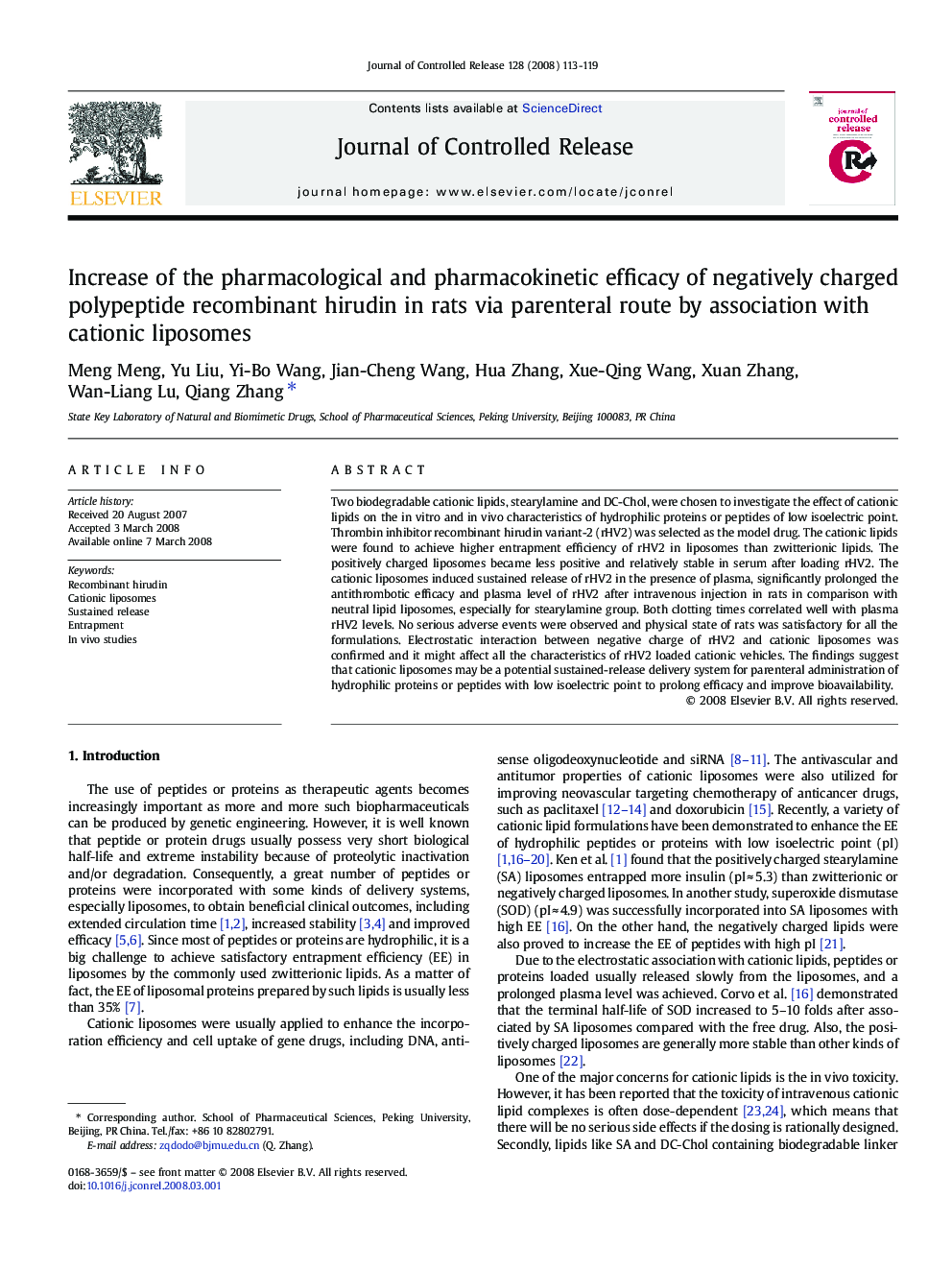| Article ID | Journal | Published Year | Pages | File Type |
|---|---|---|---|---|
| 1426634 | Journal of Controlled Release | 2008 | 7 Pages |
Two biodegradable cationic lipids, stearylamine and DC-Chol, were chosen to investigate the effect of cationic lipids on the in vitro and in vivo characteristics of hydrophilic proteins or peptides of low isoelectric point. Thrombin inhibitor recombinant hirudin variant-2 (rHV2) was selected as the model drug. The cationic lipids were found to achieve higher entrapment efficiency of rHV2 in liposomes than zwitterionic lipids. The positively charged liposomes became less positive and relatively stable in serum after loading rHV2. The cationic liposomes induced sustained release of rHV2 in the presence of plasma, significantly prolonged the antithrombotic efficacy and plasma level of rHV2 after intravenous injection in rats in comparison with neutral lipid liposomes, especially for stearylamine group. Both clotting times correlated well with plasma rHV2 levels. No serious adverse events were observed and physical state of rats was satisfactory for all the formulations. Electrostatic interaction between negative charge of rHV2 and cationic liposomes was confirmed and it might affect all the characteristics of rHV2 loaded cationic vehicles. The findings suggest that cationic liposomes may be a potential sustained-release delivery system for parenteral administration of hydrophilic proteins or peptides with low isoelectric point to prolong efficacy and improve bioavailability.
